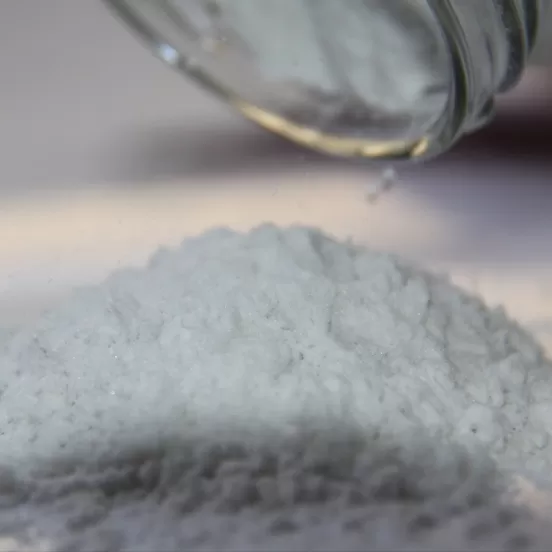Filter Perlite Micronized
Grain Size: M1= 0.0 – 75 microns
M2= 0.0 – 40 microns
Density: M1= 90–100 Kg/m3
M2= 100–150 Kg/m3
Packaging: 200 dm3/Polypropylene Bag
Filter Perlite has managed to produce special products by developing separate products for each sector in which it is used and by producing with very special technologies. At the same time, many products have been designed to meet the demands of our customers.
Perlite is used as an auxiliary filtering material in many filtration processes due to its high porosity and inorganic structure. It is advantageous because it is light and requires less use than other filter sands. Apart from this, pure filtration and filtration speed are indispensable elements that add importance to a filtration system. When we combine all these, a good filter perlite emerges.
AKPER MICRONIZED is a finely graded material collected on the septum (a sieve or cloth) when added to the liquid to be filtered. Our filter perlite creates a porous layer on the septum and therefore provides a filtering medium and opportunity that traps the solids removed in the filter and prevents them from dulling the septum.
BENEFITS OF FILTER MICRONIZED PERLITE
-MICRONIZED Perlite is light, inert, imparts no taste or odor to filtered liquids, and is virtually insoluble in mineral and organic acids at all temperatures
-In strong alkaline solutions, solubility varies depending on temperature and contact time.
-Without the use of a filter aid, solid particles in the liquid will soon accumulate on the filtering surfaces and block them.
MICRONIZED Perlite makes a filtering layer (cake) that transfers the actual filtration from the septum to the entire filter aid mass. Filtration occurs in small pores formed by the fine particles of the filter aid.
Volume-based Based Prefold Filtration
MICRONIZED Perlite filter aids offer users a lightweight material option. Perlite filter aid grades provide the user with a density advantage of 20-50% over other filter aid types. Perlite filter aid dry density varies from 100 to 200 kg/m3 (6 to 12 lb/ft3), and the filter cake density range is from 100 to 270 kg/m3 (7 to 17 lb/ft3). In comparison, other filtration materials produce filter cakes of equal performance in the range of 230 to 420 kg/m3 (15 to 25 lb/ft3).
Expanded MICRONIZED Perlite provides larger volumes with lower bulk density compared to other filter aids. Experience in a variety of applications has shown that most filter aid users can economically switch from other pre-coat filter aids to perlite without sacrificing performance.
AVAILABILITY WITH STANDARD EQUIPMENT
Perlite filter aids can be used with both pressurized and vacuum filtration equipment by simply replacing existing filter aids. Filtration research conducted in facilities or laboratories will determine the selection of the most appropriate filter aid and determine the required dosage. Perlite filter aid manufacturers have extensive experience in different filter applications. One thing to be specifically mentioned is that if perlite filter aids are used with rotary vacuum filters, the filter cakes show less cracking than when other filter aids are used.
HIGH FLOW RATES
Due to their unique physical structure, perlite filter aids offer higher flow rates with excellent clarity. These are particularly applicable to high-consistency liquids such as syrups or gelatinous slurries. Efficiency, clarity, and flow rates can be further increased by using perlite filter aids.
VARIETY ACROSS ALL THE DIFFERENT DEGREES
Perlite filter aids are produced in a variety of different grades to meet the flow rates and clarity requirements required for use in almost every industry.
EASY WASTE DISCHARGE
Because they remain porous and do not tighten, perlite filter aids enable the pulp waste to be easily removed after the filtration process is completed. This not only ensures filter cleaning but also reduces the need for manpower and therefore increases efficiency. Perlite filter aids offer 20-50% more density than other filter aids.
Flow Rates of Notes: MICRONIZED perlite filter ratings from various manufacturers range from 0.2 – 6 Darcy. (Darcy is a common unit of flow rate for filter aids.) A material with a Darcy permeability passes 1 milliliter per second per centimeter of a liquid of 1-centimeter viscosity (approximately water) through a 1-centimeter-thick cake. 1 atmosphere is the differential pressure.
Higher flow rates are especially valid for high-viscosity liquids such as syrup, resins, or gelatinous slurries. Efficiency, clarity, and flow rates can be increased by using perlite filter aid grades. These properties are realized as the liquid passes through channels formed by jagged, interlocking particles.
Easy Paste Release: MICRONIZED Additional benefits of perlite filter aids come at the end of the filter cycle. MICRONIZED Perlite filter cakes remain porous and not compact. Filter cakes are easier to form under pressure oscillation when MICRONIZED Perlite is used. This version makes cleaning easier. Potentially reduces manpower requirements. Increases productivity. The lower weight of MICRONIZED Perlite filter cakes can also reduce disposal costs.
Inert Nature of Perlite: It is both sterile and inert and is used to filter liquids in the beverage, food, and pharmaceutical industries. It imparts no taste, color, or odor and is considered safe for its intended uses, provided standards listed in the Food Chemical Codex (published by the United States National Academy of Sciences) are followed.
Note: The Food Chemical Codex is considered a source of information on the quality and purity of food-grade substances and is recognized as authoritative by many government agencies around the world.
Approval for the use of perlite as an additive in animal feed has recently been extended in the European Union. Often, used filter aid cakes from wineries, breweries, or other food-related industries can be added to animal feed. Such practices not only reduce the environmental footprint of these industries but also reduce disposal costs for the materials used.
In the United States, approval for this application was received from the Association of American Feed Control Officials (AAFCO).
Filter Perlite from Another Perspective: Perlite, which is used to provide a quality flow and superior clarity in liquid foodstuffs and certain areas of industry, consists of many microscopic channels that are notched and interlocking. Filter perlite, which enables the safe use of food items in particular, ensures that the odor, color, and taste of the filtered liquids do not deteriorate. Perlite filter, which is actively used in many fields such as the paint industry, pharmaceutical and chemical industry, filtration of various oils and waters, filtering of fructose and glucose, and purification of drinking water, makes a great contribution to reducing the problems experienced in the filtering processes of every hot or cold mixture. In addition, filter perlite is frequently preferred because it is economical and easily available.
Advantages of Filter Micronized Perlite
Filter perlite, which is used in many different industrial areas, contributes to a significant reduction in filter costs.
Perlite filters are easily compatible with all filter equipment. Filter perlite can be used easily by replacing auxiliary equipment.
Filter perlites are produced from local and natural materials. In this way, it can be easily obtained all over the world.
Thanks to their structure and production method, perlite filters provide a very high flow rate and therefore a unique clarity in the areas where they are used.
Filter perlites are produced in grades that can be used easily in all branches of industry.
Perlite filter aids ensure that pulp and waste are removed in a short time, as they remain porous and do not tighten. It also prevents clogging of the products and extends their lifespan.
Filter perlite prevents the contamination of the taste and odor of the filtered products.
Filter perlites are very economical and easily available products.
Usage areas
— Filtering vegetable cooking oils (vegetable oil),
— Filtering fruit juices,
— Filtering beer, wine and liquors,
— In filtering sugar sherbet,
— Corn sherbet filtration, (Glucose / Dextrose Production)
In the Pharmaceutical and Chemical Industry;
– Filtering antibiotics
– Pectin infiltration
– Filtration of soda ash melts
– Citric acid filtration
– Sodium silicate (water glass) filtration
– Sulfuric acid filtration
– Uranium sherbet filtration
– (White water) filtration in the paper industry
– In floc filtration (aluminum hydroxide and flocculation processes)
– Infiltration of dyes
– Phosphoric acid filtration
– In fertilizers
– In dynamite production
– In the production of textured (grainy surface) paints with high covering power
In various filtration processes;
– Machine oil filtration (regeneration of used machine oil)
– Drinking water filtration
– Filtering the water of swimming pools
– In the filtration process of cleaning wastewater
AKPER Filter Micronized Perlite allows the undissolved solids in any melt mixture to be easily separated from the liquid.
It eliminates the problems you may encounter in the filtration of cold or hot mixtures. It provides perfect filtration.
Chemical Component Amount (%)
SIO2 71 – 75
Al2O3 12 – 16
Na2O 2.9 – 4.0
K2O 4 – 5
CaO 0.2 – 0.5
Fe2O3 0.5 – 1.45
MgO 0.03 – 0.5
TIO2 0.03 – 0.2
THE STATUS OF AKPER MICRONIZE ACCORDING TO THE WORLD STANDARD FCC (Food Chemicals Codex) FOR CHEMICAL FILTERING AGENTS USED IN THE FOOD INDUSTRY
Food Chemicals Codex Amount of Permitted Impurities in AKPER Micronized
H2O less than 3% 0.032 – 0.45%
As less than 10 ppm 0.28 – 0.60 ppm.
Pb less than 10 ppm 6.40 – 7.20 ppm.
Fe 85ppm. max 21 – 36 ppm.
pH 5 – 9 6.6 – 8
Benefits of AKPER Micronized Filtering;
— Allows to obtain more filtrate per unit time.
— Provides clear and fast filtration.
— It is sterile because it is produced at high temperatures.
— Prevents clogging of filter elements and extends the usage time.
— It retains small particles of 0.1-micron size.
— It does not impair the properties of the liquid to be filtered and does not impart taste or odor.
— Pressure centrifuge and vacuum filtration are also applied successfully.
— Since its filtering capacity is high, it provides the opportunity to work with filters with lower surface areas,
— The amounts of Pb and As are very low,
Application of AKPER Micronized Perlite to Filtration Process
0.4 – 0.8 kg per 1m2 filter surface. A suspension that can be coated with micronized perlite in the shortest possible time is prepared by mixing a sufficient amount of pre-filtered liquid product with micronized perlite in the pre-coat coating tank.
This prepared suspension is introduced to form a cake on the filter surface. Depending on the filtration system used, the suspension should be circulated until the cake of the desired thickness is formed and the liquid returning to the precoat tank is clear.
In order to prevent the solids in the product to be filtered from forming an impermeable layer on the filter cake during production or to prolong the clogging time, 4 - 6 kg of the product with solids to be filtered is added to 1m3. The filtration process is continued by mixing the corresponding amount of micronized perlite.
The ideal amount of micronized perlite to be mixed into the product to be filtered should be equivalent to the weight of solids contained in the product to be filtered.
"Vacuum Rotary Drum Filters" should be used in cases where the amount of solid matter in the product to be filtered is very high.
A cake is formed by pre-coating the Vacuum Drum Filter surface with 5-10 cm thick micronized perlite.
During filtration, an impermeable layer will form on the pre-coat coating (paste). This plate is continuously scraped with an adjustable scraper blade parallel to the surface of the rotating drum in the vacuum system (the filtering process is continued by keeping the pre-coat coating thickness at approximately 6 mm).

